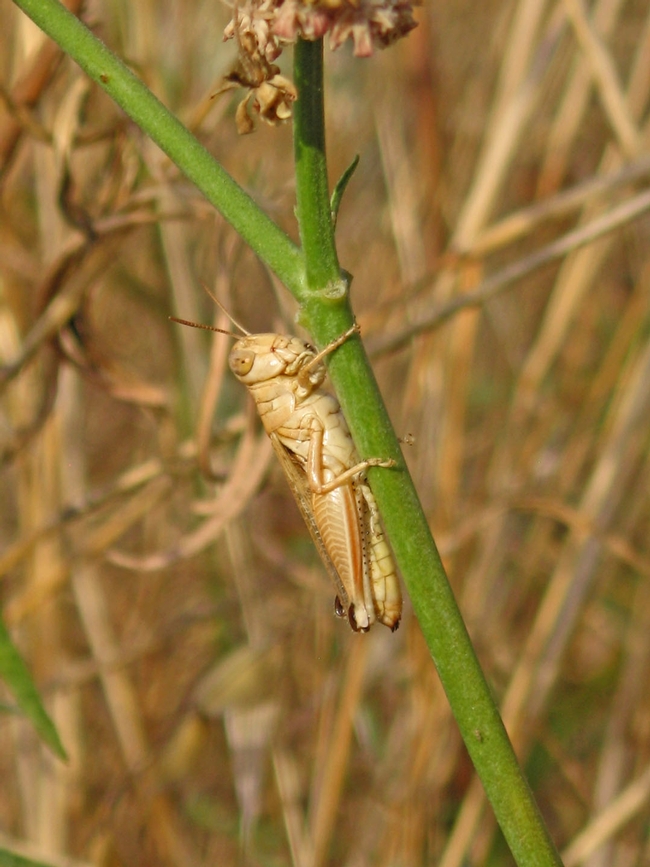Despite the alkaloid toxins within the plant tissues of the narrow-leafed milkweed, on occasion the patches are devastated by grasshoppers. This is currently happening at one of the larger milkweed patches at the UC Hopland Research & Extension Center. The grasshoppers are in such numbers, and the milkweed plants are about the only "green" plant on the dry range land right now, that they quickly consume all of the leaves on the plants leaving only stalks. This quickly puts a stop on the development of any monarch caterpillars, milkweed bug nymphs, milkweed aphids, and any other insect that relies upon the health of the plants.
There are over 200 species of grasshoppers within California. Most grasshoppers have 5 to 6 nymphal instars during their development from egg to adult. I do not know this for certain, but this grasshopper may be a Devastating Grasshopper (Melanoplus devastator), a species that can be a major pest in California on rangeland forage, orchards, grains, vegetable crops, and gardens. However, this particular photographed instar may possibly be a closely related species, the Migratory Grasshopper (Melanoplus sanguinipes).
When populations irrupt and rangeland forage becomes depleted, the Devastating Grasshopper becomes a highly migratory insect. Bands of older nymphs, such as this one, crawl and hop while swarms of adults can fly to lower elevations (valleys). Adult migrations are less predictable and may be delayed. Between 25 July and 8 August 1957 a spectacular migration of adults occurred here at UC-HREC. Specifics of that study where researchers looked at reproductive triggers such as light can be found in this reference:
Middlekauff,W.W. 1964. Effects of photoperiod upon ovarian genesis in Melanoplus devastator Scudder (Othoptera: Acrididae), J.Kansas Entolol. Soc. 37: 163-168.
